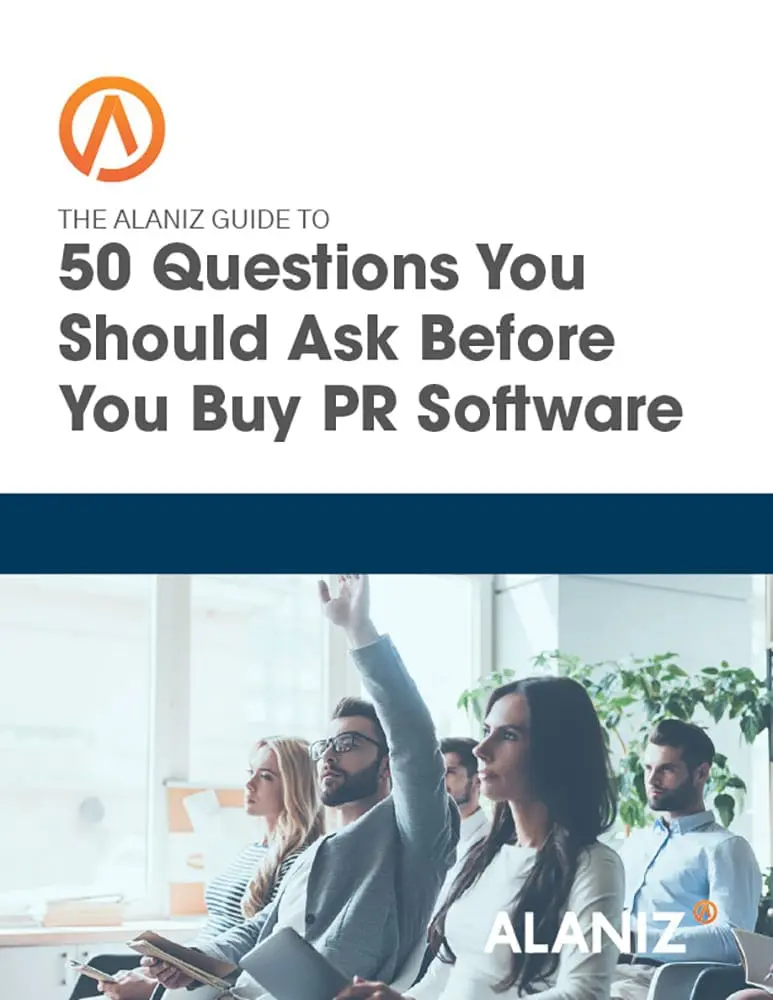This blog post is part of “The Ultimate Guide to Public Relations” blog series.
In today’s multichannel media world, reaching journalists, publications, and other influencers with your company’s news represents an enormous challenge. There are traditional print and online news outlets like CNN and Yahoo! News, there are trade publications and websites focused on specific industries, and there are bloggers and social publishers with a range of followers. The landscape changes every day. How do you find them and how to do you contact them?
Journalists typically dislike mass, anonymous email pitches. Anonymous pitches tell them immediately that a) the same pitch is going to multiple journalists so there’s no scoop; and b) the sender hasn’t made any effort to get to know the writer and what they cover so it’s likely irrelevant.
Enter the PR database–a listing of journalists, their publications, and beats that you can use to target the right journalist for your message, eliminating anonymous pitches. PR databases can be invaluable tools to help companies get their news to the right writer and to dramatically increase your odds of getting coverage for your news. This is a quick guide to three of the major PR databases, with a summary of their features, strengths, and weakness.
Cision
Cision is the grandaddy of PR databases. It began its life as Bacon’s Information, a print encyclopedia of media outlets first published in the 1930s. Cision boasts what it calls the largest PR database in the world (1.6 million listings), and allows you to search for journalists and bloggers based on publications and beats. You can build and save lists based on multiple criteria and email journalists with personalized cover letters. Cision also offers integrated wire service distribution through PRWeb, and includes Help A Reporter Out (HARO), a tool that journalists use to find sources–in other words the journalists pitch you (HARO is a free service also available to non-Cision users). Cision has also acquired PR Newswire, one of the largest wire services in the world, giving the company what it now calls “the industry’s largest content distribution network.” One of the strengths of Cision’s platform is its editorial calendar database, which contains the ed cals of hundreds of publications. This can be a real time saver for gaining visibility into your target news outlets’ publication plans. Finding and managing dozens of editorial calendars is otherwise very labor intensive. Cision also has comprehensive media monitoring tools to know when your company, competitors, or partners are mentioned on social and traditional media, and also analyzes “sentiment” toward your company by tracking positive and negative words used. Cision’s core strength is its comprehensiveness. The most common complaint about the platform is its usability–the product has evolved through internal development along with multiple acquisitions of other companies, and the features are always intuitive.
Meltwater
Meltwater began its life as an online news aggregator helping companies track media mentions and news about competitors. It has evolved into a media database that can be used to monitor news, build media lists, send your release to a wire service (Marketwired), and to send personalized messages to specific journalists. Like Cision, Meltwater can be used to search for journalists by beat, location, and outlet; but it also adds a natural language processing (NLP) search functionality help you find writers based on the content of their recent coverage rather than a predetermined beat or outlet. This is especially valuable in the social publishing world of bloggers and and the like, where traditional categories of beat and outlet don’t always apply. With Meltwater, you can find out who is writing about a company, industry, product, or issue now and engage with that journalist immediately. Another strength of Meltwater is it’s “Influencer” measurement functionality. Recognizing that all journalists and publications don’t have the same clout, it measures and ranks outlets by influence, further helping you target the right writers for your story. Meltwater has been criticized for the performance of the platform–slow and unreliable at times. Melwater has upgraded its platform over the course of the past to address these concerns.
Muck Rack
Muck Rack was born in the social media era, and it shows. Most journalists and publications now use Twitter to post, promote, and even research stories. Recognizing this, Muck Rack set out to create a platform to help PR professionals find and follow legitimate journalists within the vast Twitter universe. It basically uses Twitter as its media database, allowing you to do most of what you would do with Cision and Meltwater–building lists based on search criteria like publication, beat, recent stories, and geography; sending personalized messages to individual journalists; and monitoring news about your company or others (its alerts feature can tell you when writers are planning to cover a topic). It does it all using Twitter as a foundation, though now it offers articles and journalists outside of Twitter. One of the core strengths of Muck Rack is that journalists use it too. They build profiles for their own story promotion and share them with the PR pros. This allows you to see, in many cases, what journalists are writing about before they publish it. Most journalists also tell you what kind of stories they’re looking for and how they like to be pitched. Muck Rack is focused on facilitating positive connections between PR people and writers. It doesn’t offer a wire service distribution, partly because the company has set out from the beginning to reduce what it calls PR “spam”–the kind of anonymous, mass outreach that generally doesn’t work anymore.
One of the difficulties of comparing PR databases is the lack of published pricing. It’s hard to assess the value of the platforms without knowing how much you’ll pay for what you’re getting. So you have to try each one, talk with a representative, and figure out the apples and oranges to get a completely accurate picture of which platform will meet your needs. Sites like g2crowd.com and trustradius.com aggregate reviews from users of these and other software platforms that can be very helpful.
This blog post is part of “The Ultimate Guide to Public Relations” blog series.





